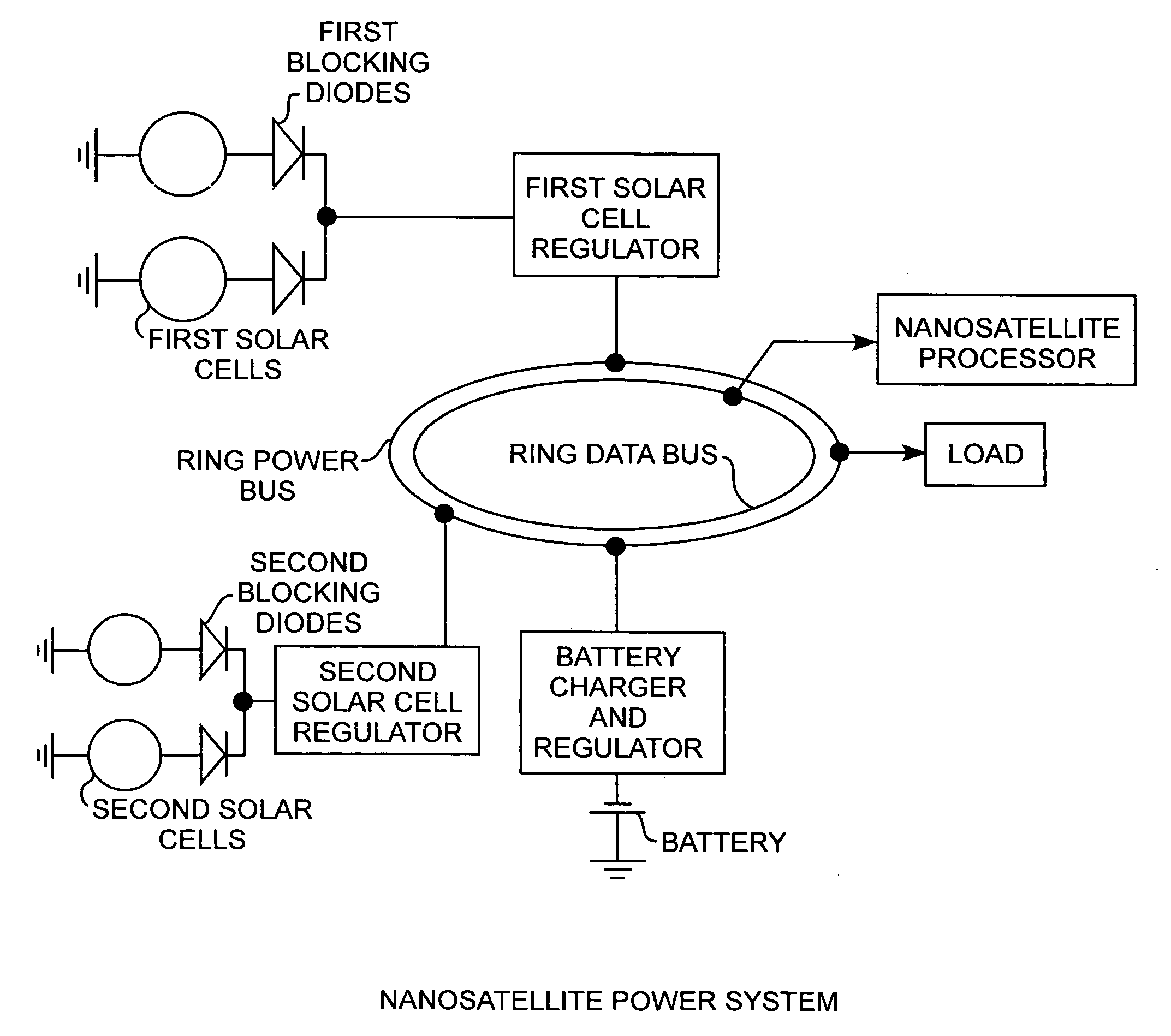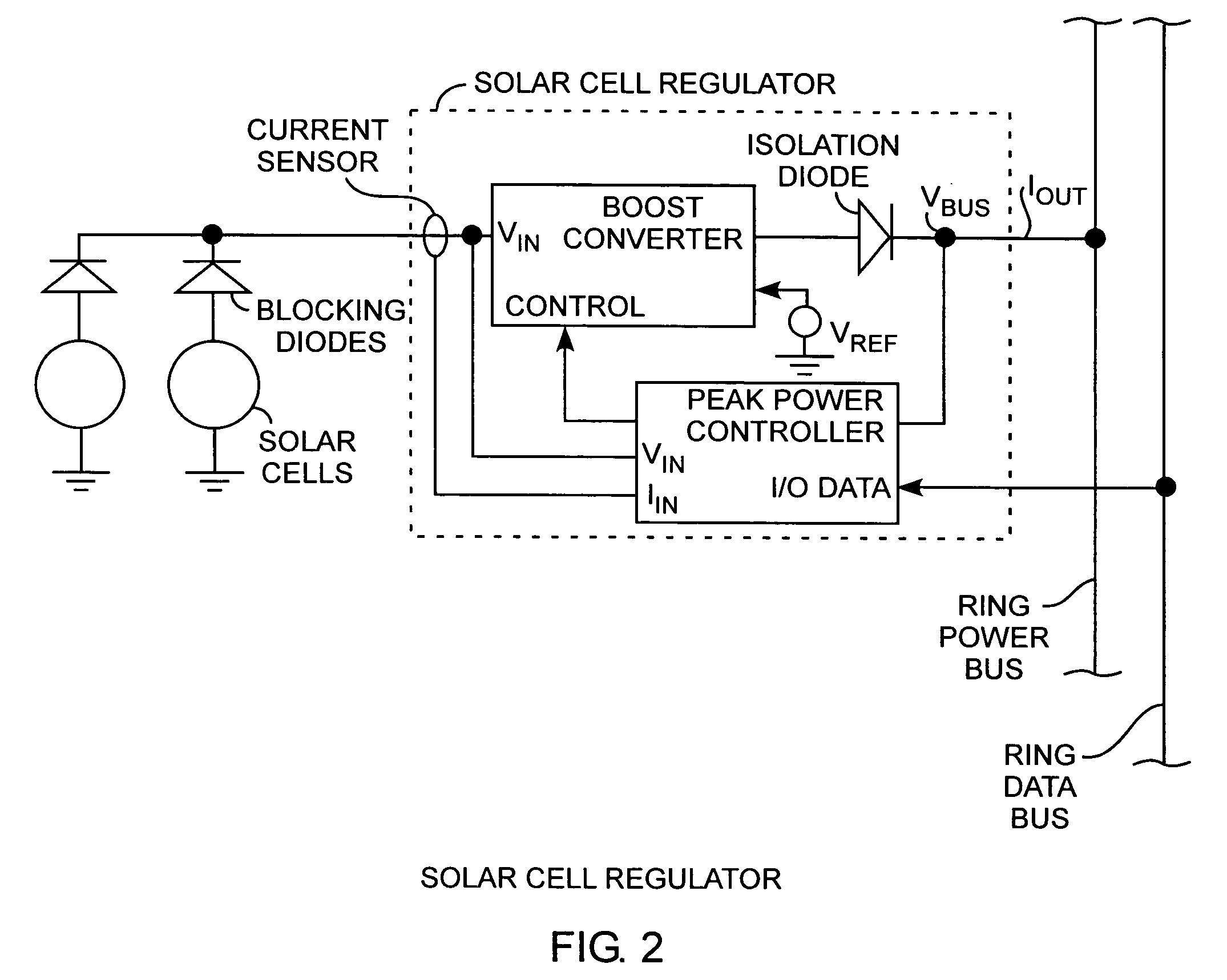Nanosatellite solar cell regulator
a solar cell and nanosatellite technology, applied in secondary cell servicing/maintenance, light radiation electric generators, instruments, etc., can solve the problems of inability of satellites to ascertain the operation efficiency of solar cells, undetermined amount of power generation, and loading problems of distributed power systems, etc., to achieve short-circuit current determination
- Summary
- Abstract
- Description
- Claims
- Application Information
AI Technical Summary
Benefits of technology
Problems solved by technology
Method used
Image
Examples
Embodiment Construction
[0016] An embodiment of the invention is described with reference to the figures using reference designations as shown in the figures. Referring to the FIG. 1, a nanosatellite power system includes a ring power bus for routing power and preferably includes a ring data bus for communicating data. A load draws power from the ring power bus. A battery charger and regulator is connected between the ring power bus and battery for charging and discharging battery power from and onto the ring power bus as needed. First and second solar cell regulators are connected to the ring power bus for coupling solar power onto the ring power bus. First and second pairs of solar cells are respectively connected to first and second pairs of blocking diodes that are in turn respectively connected to the first and second regulators. The solar cells and the blocking diodes are shown in pairs as is common in solar arrays disposed on orbiting satellites. The nanosatellite power system can include any number...
PUM
 Login to View More
Login to View More Abstract
Description
Claims
Application Information
 Login to View More
Login to View More - R&D
- Intellectual Property
- Life Sciences
- Materials
- Tech Scout
- Unparalleled Data Quality
- Higher Quality Content
- 60% Fewer Hallucinations
Browse by: Latest US Patents, China's latest patents, Technical Efficacy Thesaurus, Application Domain, Technology Topic, Popular Technical Reports.
© 2025 PatSnap. All rights reserved.Legal|Privacy policy|Modern Slavery Act Transparency Statement|Sitemap|About US| Contact US: help@patsnap.com



